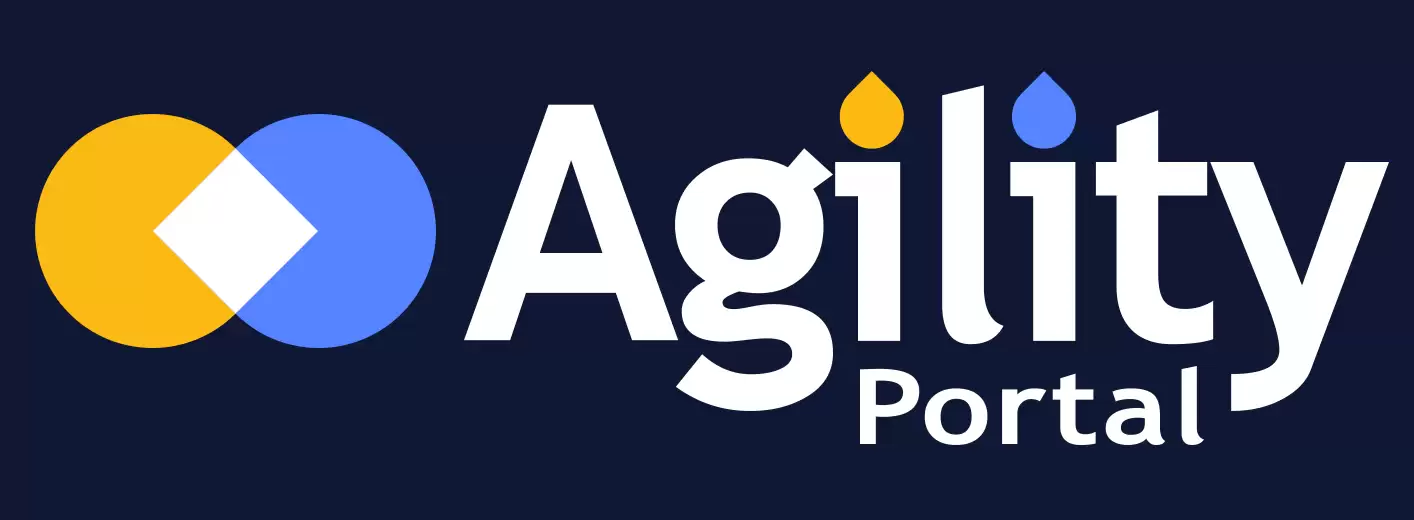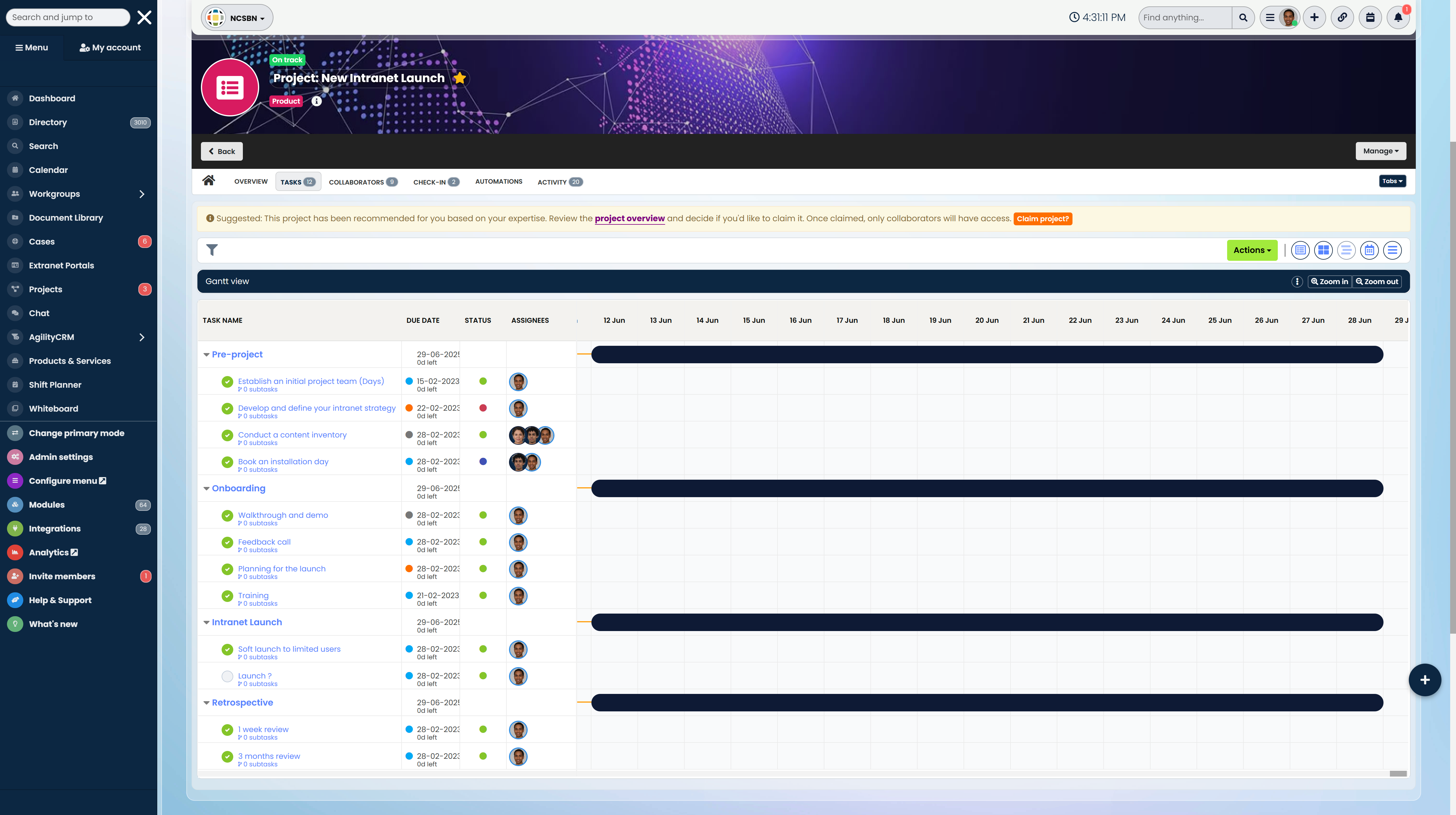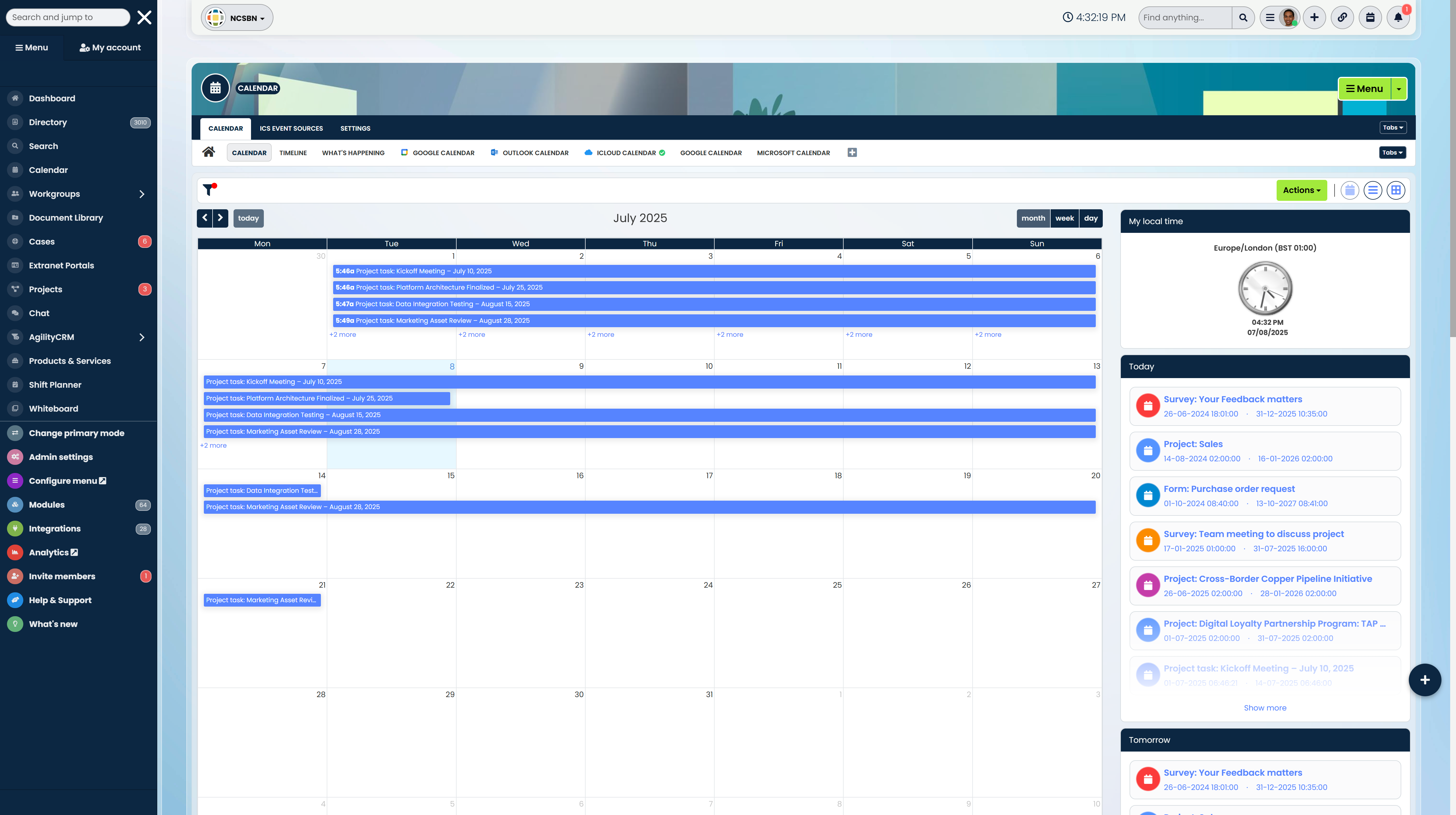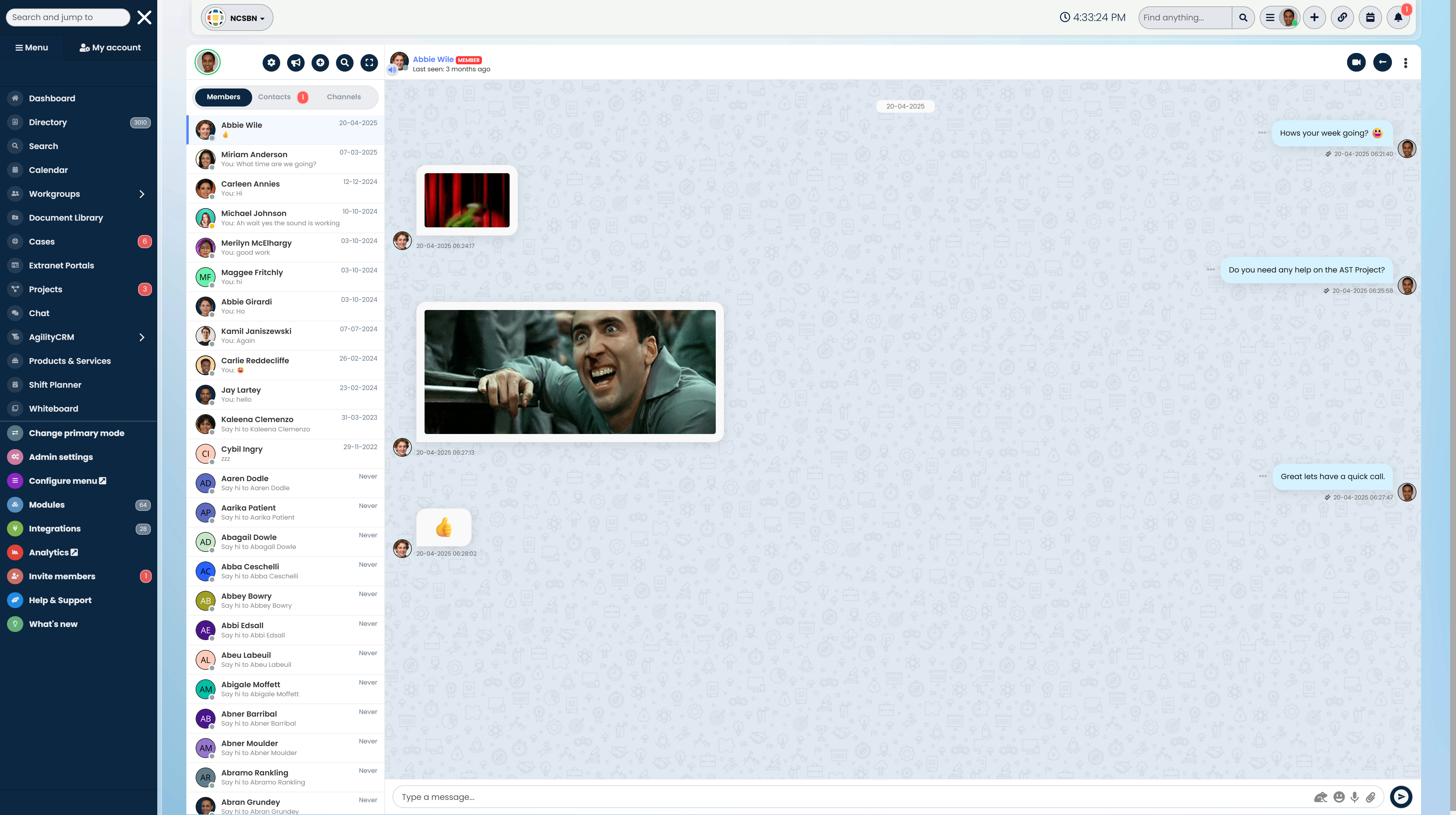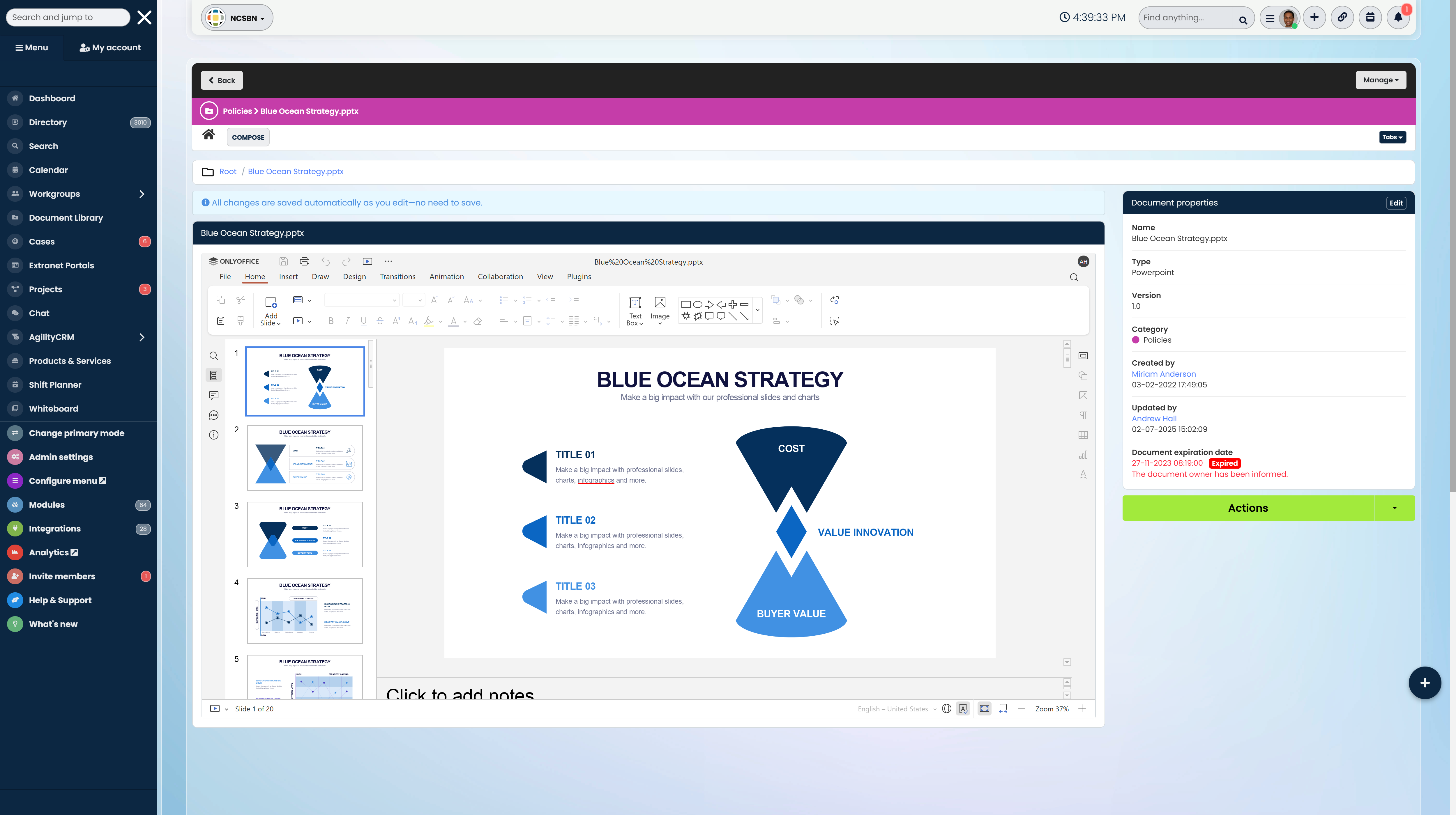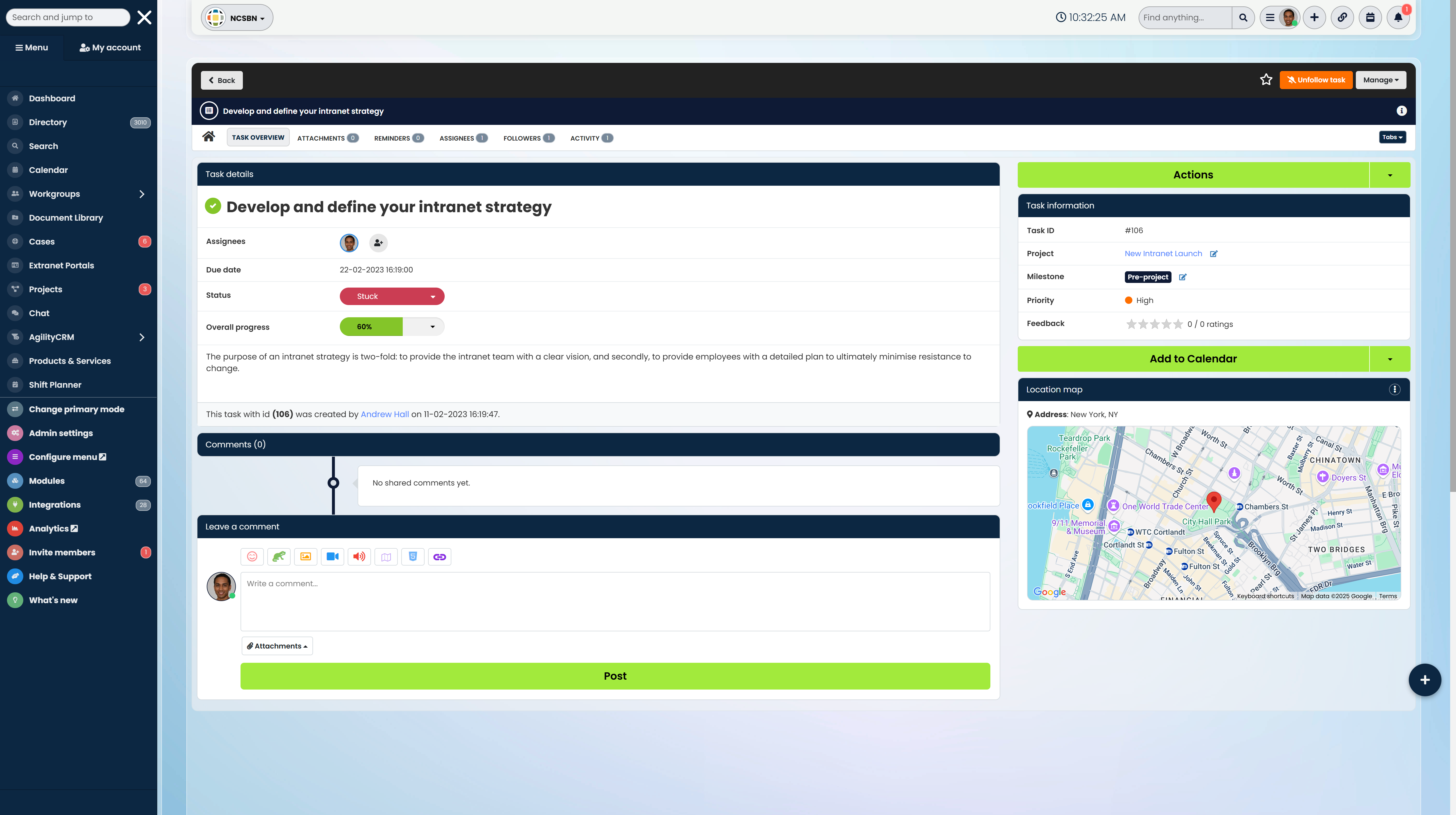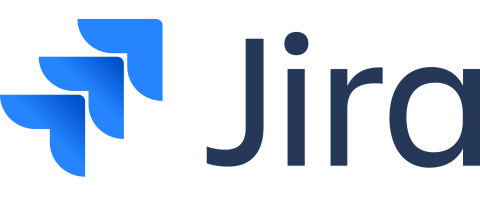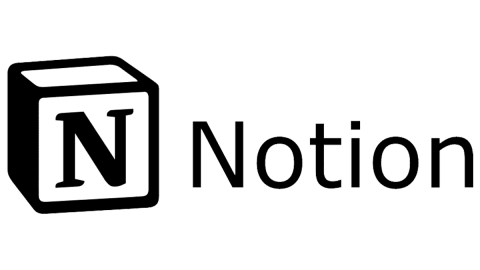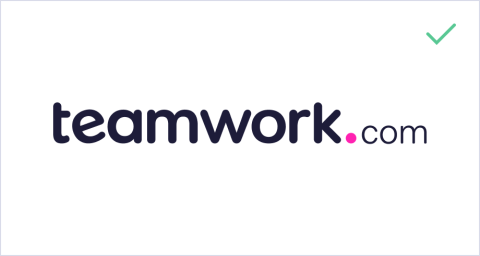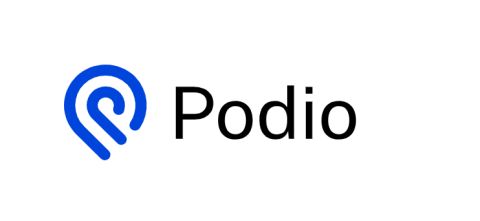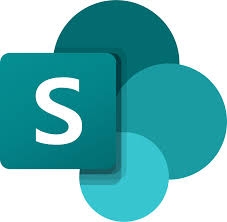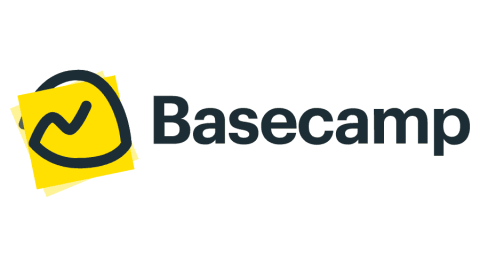Insight Blog
Agility’s perspectives on transforming the employee's experience throughout remote transformation using connected enterprise tools.
27 minutes reading time
(5344 words)
The 15 Best Team Collaboration Software Tools for Hybrid and Remote Teams
Discover the 15 best Team Collaboration Software Tools for hybrid and remote teams to boost communication, manage projects, and streamline teamwork.
In today's fast-paced hybrid work environment, staying connected isn't just nice—it's necessary.
With more than 80% of employees now working remotely at least part of the time, the demand for intuitive, powerful collaboration tools has never been higher.
That's why Team Collaboration Software is at the heart of every successful organization's digital toolkit.
In this guide, we dive into The 15 Best Team Collaboration Software Tools for Hybrid and Remote Teams, offering insights on how the rise of remote work has reshaped the way teams communicate, share knowledge, and manage projects.
From real-time messaging to integrated file sharing and project tracking, these tools are built to help teams overcome distance, time zones, and communication barriers.
We'll also explore the impact of remote work trends on software design—why seamless integrations, mobile access, and user-friendly interfaces have become non-negotiables.
Whether you're a startup scaling fast or an enterprise rethinking its tech stack, this blog helps you find the right fit.
Let's take a closer look at the platforms redefining collaboration in 2025—because in the world of hybrid work, choosing the right tool isn't optional—it's mission-critical.
Collaboration Challenges in Today's Digital Workplace
In 2025, the modern workplace is a blend of in-person interaction and digital-first operations.
While team collaboration software has transformed the way we communicate and manage projects, many organizations still face serious challenges of collaboration in the workplace that hinder overall productivity.
The rise of hybrid and remote work has made collaboration tools essential. Studies show that digital platforms can increase productivity by up to 30%. However, the impact of lack of collaboration often outweighs the benefits when tools are mismanaged or underutilized.
A common lack of collaboration example is tool overload.
According to Asana, employees switch between an average of 10 different apps per day, leading to fragmented workflows and poor communication. This constant context switching is one of the clearest bad collaboration examples, where valuable time is spent navigating systems instead of collaborating meaningfully.
Another major issue is the lack of collaboration and teamwork in the workplace caused by disjointed systems and poor integration. When employees can't easily access shared documents, assign tasks, or track timelines, confusion and delays become the norm. These are real-world collaboration challenges examples that many businesses encounter daily.
So, what does lack of collaboration mean for business outcomes?
It means missed deadlines, lower morale, decreased innovation, and even higher employee turnover. Simply put, the lack of collaboration meaning extends beyond just communication gaps—it's about broken workflows and a misaligned company culture.
To combat these problems, companies must prioritize platforms that support real-time chat, task automation, document sharing, and feedback loops—all in one place. Learning how to overcome collaboration challenges starts with choosing technology that eliminates silos and supports cohesive teamwork.
Investing in all-in-one solutions not only improves efficiency but also restores strong communication culture—turning lack of collaboration and teamwork examples into success stories.
Read this article: : Top 6 AI-Powered Project Management Tools To Use In 2023
What Is Team Collaboration Software in 2025?
As hybrid and remote work continue to reshape the modern workplace, Team Collaboration Software tools have emerged as the cornerstone of successful team performance in 2025.
These platforms go far beyond simple messaging or file sharing—they provide an integrated digital workspace where employees can brainstorm ideas, track project timelines, assign tasks, and co-edit documents in real time.
With the rapid growth of distributed teams, the trend in 2025 is clear: businesses are investing in intelligent, scalable collaboration tools that promote agility, transparency, and productivity.
Whether you're a startup looking to stay lean or a global enterprise managing thousands of employees, collaboration tools offer the structure and flexibility needed to adapt and thrive.
Today's top team collaboration tools include features like AI-powered task prioritization, seamless integration with HR and CRM platforms, built-in video conferencing, and advanced analytics to monitor performance and engagement. These tools don't just keep your team aligned—they drive innovation by making it easier to exchange ideas, prevent silos, and improve decision-making across departments.
Ultimately, the impact of team collaboration software in 2025 goes beyond project management—it shapes workplace culture, enhances employee satisfaction, and helps organizations remain competitive in a digital-first world
6 Types of Collaboration Tools
Choosing the right collaboration software starts with understanding what your team truly needs. Some tools specialize in specific functions like messaging or file sharing, while others offer a comprehensive, all-in-one solution.
Depending on your workflow, you can either adopt an integrated collaboration platform or build a custom tech stack by combining multiple tools—one for communication, another for task tracking, another for document management, and so on.
Here are six key categories of team collaboration tools every business should consider:
1. Whiteboard app
The best whiteboard online platforms bring the simplicity of traditional brainstorming into a powerful, digital experience. Teams can visually map ideas, sketch workflows, and collaborate in real time—no matter where they're located.
A top choice for remote teams is the Miro whiteboard, known for its flexible templates, sticky notes, and integration with other productivity tools.
Whether you're planning sprints, conducting workshops, or facilitating virtual stand-ups, an online whiteboard helps create an interactive space that boosts creativity and engagement.
Many of these tools also double as a whiteboard app, available on desktop and mobile, making it easy to capture and share ideas on the go.
2. Best Project Management Software
The best project management software helps teams stay organized, meet deadlines, and deliver results by centralizing task tracking, timelines, and team responsibilities.
Popular platforms like project management software Asana offer intuitive interfaces and flexible features for everything from sprint planning to daily task coordination. For businesses looking for a familiar enterprise solution, Microsoft Project provides robust capabilities for complex planning and resource management.
If you're on a budget, several free project management software options—like Trello, ClickUp, and the free version of Asana—offer powerful tools without the cost. Many solutions available in the AI project management software UK market cater to both small teams and large enterprises, offering localized support and integrations with popular UK-based business systems.
Whether you're a startup or a large organization, investing in the best free project management software or a premium plan can dramatically improve productivity, accountability, and project visibility across your team
3. Free Shared Team Calendars
Shared team calendars are essential for coordinating meetings and deadlines across distributed teams.
Tools like Google Calendar and shared team calendars in Outlook make scheduling seamless by managing time zones, sending automated reminders, and allowing users to check colleague availability instantly.
For businesses on a budget, there are also free shared team calendars that offer robust functionality, helping teams stay aligned without extra costs.
These digital calendars reduce scheduling conflicts, streamline planning, and ensure everyone is on the same page—whether working in-office or remotely.
4. Instant Messaging Apps
The best instant messaging platforms play a crucial role in keeping remote and hybrid teams connected throughout the day.
These tools enable fast, informal communication—ideal for real-time updates, quick clarifications, or casual conversations that build team culture.
Popular instant messaging examples include Google Chat, Slack, and Microsoft Teams, all of which offer group chats, direct messaging, and integrations with productivity tools.
Modern instant messaging apps also support file sharing, notifications, and searchable message history, making them indispensable for streamlined internal communication.
5. File Sharing & Document Collaboration Software
Modern document collaboration tools provide secure, centralized platforms where teams can store, access, and manage files in real time.
Instead of emailing files back and forth, users can engage in collaborative document editing, allowing multiple team members to work on the same file simultaneously.
With features like version control, permission settings, and activity tracking, document collaboration software ensures that content stays organized, accessible, and secure—making it easier for remote and hybrid teams to stay aligned and productive.
6. Video Conferencing Tools
Video conferencing tools are essential for remote teams needing real-time communication and collaboration.
Platforms like AgilityPortal, Zoom, Microsoft Teams, and Google Meet are popular video conferencing software examples that allow teams to conduct virtual meetings, share screens, chat, and even use features like virtual backgrounds to enhance the experience.
These tools help recreate in-person interactions, making it easier to align teams, host client calls, and maintain engagement in hybrid or fully remote work environments.
#1. AgilityPortal
AgilityPortal is an all-in-one collaboration platform built to help teams connect, manage projects, and share knowledge effortlessly—whether they're in the office or working remotely.
With an intuitive interface and a social media-like experience, AgilityPortal brings together chat, tasks, and document collaboration into one seamless environment.
Teams can create projects, assign tasks, chat in real time, and securely manage documents—all from a single dashboard.
Its flexibility and user-friendly design make it ideal for organizations looking to improve cross-functional collaboration and streamline internal communication without the need for switching between multiple tools.
Key Features
- Centralized project management with task tracking and deadlines
- Real-time chat and direct messaging for instant communication
- Secure document sharing and file storage with version control
- Visual project views including Kanban boards and calendars
- Team and department-specific workspaces for focused collaboration
- Integrated notifications and activity tracking to keep teams aligned
- Accessible on desktop, iOS, Android, and web platforms
#2. Flock
The Flock app is a team messaging and collaboration platform designed to streamline internal communication and improve workplace productivity. Known for its simplicity and ease of use, Flock creates a centralized space where teams can chat, share files, manage tasks, and host video calls—making it a powerful alternative to more complex team collaboration tools.
One of the key Flock benefits is its intuitive interface, which reduces the learning curve for new users and helps businesses onboard faster.
Whether you're managing projects, assigning to-do lists, or chatting in real time, Flock ensures everything is organized and accessible in one place. Its built-in productivity tools—including shared to-do lists, polls, reminders, and file storage—are especially popular with startups and small to mid-sized teams.
The Flock app is available across multiple platforms, including iOS, Android, Windows, macOS, and directly via the web through any modern browser, such as Flock browser mode.
This cross-platform compatibility makes it ideal for remote teams or hybrid workplaces where seamless access from anywhere is critical.
Key Features of the Flock App
- Team Messaging and Group Channels
- Audio and Video Calling
- File Sharing and Collaboration
- Integrated Task Management and To-Do Lists
- Searchable Chat History
- Integration with External Tools (ATS & More)
#3. Google Drive
Google Drive has become a foundational tool for modern team collaboration and efficient document management.
As a cloud-based platform, it enables users to create, store, and share files in real time, making teamwork more streamlined and productive.
Its powerful collaborative editing and commenting tools allow multiple users to work together on documents, spreadsheets, and presentations simultaneously.
Seamless integration with other Google Workspace apps ensures a consistent and connected user experience, helping teams stay organized and in sync.
Key Features
- Cloud-based file storage and access
- Real-time collaboration on documents
- Deep integration with Google Workspace tools
- Easy file sharing across teams
- Offline access to files when needed
- In-document commenting and feedback tools
- Request tracking and document activity insights
#4. Loom
Loom offers a fresh take on team communication by focusing on asynchronous video messaging, making it easier to share ideas, updates, and feedback without the need for live meetings.
Ideal for quick walkthroughs, status updates, and team announcements, Loom helps humanize communication through short, personalized videos. Its ease of use and ability to record both screen and webcam simultaneously make it a go-to for clear, engaging explanations.
While it integrates smoothly with various email clients and collaborative tools, Loom's capabilities are more niche—best suited for video-based communication rather than serving as a full-scale collaboration suite.
Key Features
- Asynchronous video communication
- Screen and webcam recording
- Easy sharing via link or integrations
- Compatible with email platforms and applicant tracking systems (ATS)
- Time-stamped commenting and viewer feedback
- Engagement analytics and view tracking
- Available on desktop and mobile apps
#5. Jira
Jira is a leading platform purpose-built for agile project management and issue tracking, making it a favorite among software development teams.
Designed to support fast-paced, iterative workflows, Jira offers robust tools for planning sprints, managing tasks, and resolving bugs with clarity and control. Its powerful customization options enable teams to tailor workflows, boards, and permissions to fit their unique processes.
With seamless integrations across the development stack and deep reporting features, Jira promotes visibility, accountability, and continuous improvement throughout the project lifecycle.
Key Features
- End-to-end issue and bug tracking
- Agile tools including Scrum and Kanban boards
- Fully customizable workflows to fit any process
- Team communication and task coordination
- Integration with applicant tracking systems (ATS) and dev tools
- Advanced analytics and performance reporting
- Personalized boards and dashboards for teams
#6. Notion
Notion stands out as a versatile all-in-one workspace that unifies note-taking, task management, and knowledge sharing into a cohesive, customizable platform.
Its strength lies in flexibility, allowing teams to adapt the workspace to fit their unique processes and collaboration styles.
Whether building internal wikis, organizing tasks, or managing projects, Notion provides a centralized and intuitive space for team alignment and productivity. Its modular design supports a wide range of use cases, from simple to complex, making it ideal for teams of any size.
Key Features
- Seamless real-time collaboration across teams
- Fully customizable databases and internal wikis
- Built-in task management with checklists and to-do boards
- Integrations with applicant tracking systems (ATS)
- Multiple view options including Gantt, Kanban, and calendar
- A library of adaptable templates for faster setup
- Clean, user-friendly interface for writing notes and documentation
#7. Teamwork
Teamwork delivers a robust all-in-one platform that brings together project management, task coordination, and file sharing to streamline team collaboration. Designed to centralize workflows, it creates a shared digital workspace where teams can plan, assign, and track tasks with clarity.
Its intuitive interface and visual tools—like Gantt charts—make managing complex projects more approachable.
Teamwork is especially valuable for service-based teams managing client work, although its rich feature set may come with a learning curve for first-time users aiming to tailor the platform to their needs.
Key Features
- End-to-end project management functionality
- Task assignment, tracking, and status updates
- Document collaboration with version history
- Built-in time tracking for accurate reporting
- Integrates with leading applicant tracking systems (ATS)
- Gantt chart views for visualizing timelines and dependencies
- Tools for smooth and professional client onboarding
#8. Monday.com
Monday.com is a dynamic work operating system that empowers teams to plan, track, and manage projects with ease.
Known for its colorful, user-friendly interface, the platform transforms complex workflows into visually structured boards, enabling real-time collaboration and progress tracking.
With drag-and-drop functionality and powerful automation tools, teams can streamline repetitive tasks and customize their workspace to suit any project or industry.
While Monday.com excels in versatility and usability, getting the most out of its advanced features may require time for setup and team onboarding.
Key Features
- Visual project and task management boards
- Custom workflows with drag-and-drop automation
- Real-time collaboration and team updates
- File sharing and document management
- Native time tracking for resource planning
- Integration with ATS and third-party tools
- Multiple project views including calendar, Kanban, and timeline
#9. Podio
Podio offers a flexible and customizable collaboration platform designed to streamline project management, team communication, and data organization.
Unlike rigid project tools, Podio gives users the freedom to build their own workspace by combining apps, workflows, and fields tailored to their specific business needs.
This adaptability makes it ideal for teams that require more than just task tracking — from managing client relationships to handling internal operations. While its customization capabilities are a major strength, Podio may require initial setup time to unlock its full potential.
Key Features
- Customizable workspaces and app builder
- Task and project management with flexible workflows
- Centralized communication and collaboration
- Document storage and sharing
- Integration with applicant tracking systems (ATS)
- Automated workflows and activity streams
- CRM, project tracking, and internal operations in one platform
#10. Zoho Workplace
Zoho Workplace is a unified suite of productivity and collaboration tools designed to simplify communication, content creation, and team coordination.
It combines email, document management, chat, video conferencing, and productivity apps into a single, integrated platform. Ideal for businesses seeking a cost-effective alternative to larger ecosystems, Zoho Workplace allows teams to create, edit, and collaborate on documents in real-time while managing communication seamlessly.
While its feature-rich environment supports diverse workflows, users may need time to explore the full range of tools and integrations available.
Key Features
- Integrated suite including email, chat, and video conferencing
- Real-time document editing and collaboration tools
- Cloud storage and centralized file management
- Task management and team coordination
- Seamless integration with Zoho's ATS and other business apps
- Admin controls for user and data management
- Compatible across desktop and mobile platforms
#11. Slack
Slack Project Management is a leading communication platform designed to replace fragmented email threads with organized, real-time messaging across teams.
Built around channels, Slack enables focused conversations by project, topic, or team, while also supporting direct messaging and group chats. Its powerful integrations with hundreds of tools—from Google Drive to project management apps—turn Slack into a centralized hub for collaboration.
With searchable message history, file sharing, and robust notification controls, it enhances transparency and speeds up decision-making. Though feature-rich, larger teams may need to manage channel sprawl and notifications for optimal use.
Key Features
- Channel-based messaging for focused collaboration
- Direct messages and group chats for quick communication
- Seamless integrations with project tools and ATS
- File sharing and searchable conversation history
- Audio and video huddles for real-time interaction
- Notification customization and keyword alerts
- Available on desktop, mobile, and web apps
#12. Microsoft Teams
Microsoft Teams is a robust communication and collaboration platform that brings together chat, video conferencing, file sharing, and app integration—all within the Microsoft 365 ecosystem. Designed for seamless teamwork, Teams allows users to create dedicated channels for projects or departments, enabling structured conversations and easy access to shared resources. With deep integration into Word, Excel, SharePoint, and Outlook, it serves as a centralized workspace for both remote and in-office teams. While its capabilities are extensive, organizations may need time to configure settings and train users to navigate its full potential.
Key Features
- Persistent team chat and threaded conversations
- HD video meetings and screen sharing
- File storage and real-time co-authoring with Microsoft 365 apps
- Integration with Outlook, SharePoint, and third-party tools
- Customizable channels and tabs for project organization
- Enterprise-grade security and compliance
- Desktop, mobile, and web access for flexible collaboration
#13. Microsoft Sharepoint
SharePoint is Microsoft's enterprise-grade platform designed for document management, intranet development, and team collaboration.
Commonly used by large organizations, SharePoint enables teams to build internal sites, manage content libraries, and automate workflows. Its deep integration with Microsoft 365 apps supports real-time co-authoring and secure file sharing across departments.
While SharePoint offers powerful capabilities for structuring and organizing business data, its complexity and rigid architecture can pose a learning curve for non-technical users, especially when compared to more modern, user-friendly platforms.
Key Features
- Advanced document management and version control
- Customizable intranet and internal portals
- Seamless integration with Microsoft 365 apps
- Team sites for department-level collaboration
- Built-in workflows for automating business processes
- Enterprise-level permissions, security, and compliance tools
- Centralized storage and searchable content libraries
#14. Trello
Trello is a visual project management tool known for its simplicity and intuitive design, making it ideal for individuals and teams looking to organize tasks and workflows. Built around customizable Kanban-style boards, Trello allows users to create lists and cards to track project progress, assign tasks, and collaborate in real time.
With drag-and-drop functionality, due dates, labels, and checklists, Trello keeps projects clear and on track.
While it excels in ease of use and quick setup, it may lack the depth needed for managing complex or large-scale operations without added integrations or power-ups.
Key Features
- Visual task management using Kanban boards
- Customizable cards with checklists, attachments, and due dates
- Real-time collaboration and commenting
- Integrations with popular tools like Slack, Google Drive, and ATS
- Power-ups for advanced features like Gantt charts or time tracking
- Easy drag-and-drop interface
- Mobile and desktop apps for on-the-go access
Learn more about remote teams
8 Best Software for Remote Teams: Training Programs and Strategies
8 Best Software for Remote Teams: Training Programs and Strategies
#15. Basecamp
Basecamp is a streamlined team collaboration tool designed to simplify communication, task management, and file sharing in one easy-to-use platform.
Built with clarity and simplicity at its core, Basecamp provides teams with dedicated spaces to organize projects, hold discussions, assign to-dos, and store files—all without the noise of scattered tools. Its minimal learning curve and flat pricing model make it a favorite for teams that value transparency and productivity over complex workflows.
Whether managing internal tasks or client projects, Basecamp helps teams stay focused and in sync.
Key Features
- Organized project spaces with built-in task lists and milestones
- Group message boards and real-time chat for clear communication
- Centralized document storage and easy file sharing
- Schedules and calendars to track important deadlines
- Automatic check-ins to gather status updates without meetings
- Notification controls to reduce distractions and keep focus
- Available on web, desktop, iOS, and Android devices
Key Features of Team Collaboration Software
Choosing the right team collaboration software means finding a platform that balances flexibility, usability, and integration.
The best solutions combine communication, task tracking, file management, and workflow automation into one powerful workspace.
Here's a breakdown of the most valuable features top-rated collaboration tools offer:
- Task Management and Assignment - Effective collaboration starts with clear responsibilities. The best platforms let you create, assign, and prioritize tasks, ensuring that nothing falls through the cracks. If someone is unavailable, reassigning their tasks to another team member should be seamless and fast.
- Visual Boards and Organized Lists - Kanban-style boards and checklists help teams stay on top of both individual and group responsibilities. These visual tools make it easy to track progress, manage workloads, and keep important tasks front and center.
- Customizable Workflows and Automation - Every team works differently. That's why leading tools offer flexible workflow builders or rule-based automation. Whether using pre-set templates or building custom workflows from scratch, teams can streamline repetitive tasks and tailor the software to match internal processes.
- Built-In Communication Tools - Integrated messaging features—such as group chats, direct messages, and even voice/video calls—keep all communication within the platform. This eliminates app-switching and centralizes all conversations around the work being done.
- Smart Notifications and Reminders - Stay ahead of deadlines with customizable notifications. Whether through email, in-app alerts, or mobile push notifications, collaboration tools should keep you informed about task updates, milestone completions, and schedule changes.
- Document Sharing and Cloud File Management - Robust file management features allow users to upload, store, and share documents directly within the platform. Many tools offer secure, scalable cloud storage to ensure files are accessible when and where they're needed.
- Role-Based User Permissions - With different stakeholders involved—employees, freelancers, vendors, or clients—access control is crucial. Top platforms allow you to assign user roles and permissions, ensuring that sensitive data is only visible to the right people.
- Third-Party Integrations - The most effective collaboration tools connect with your existing tech stack. From applicant tracking systems (ATS) and payroll software to CRMs and communication platforms, integrations help eliminate redundant work and keep data synchronized across systems.
- Mobile Access for On-the-Go Teams - A must-have for hybrid and remote workforces, mobile apps allow users to manage tasks, receive updates, and collaborate from anywhere. iOS and Android support ensures your team can stay productive—even away from their desks.
- Additional Business Features - Some advanced platforms also offer time tracking, invoicing, expense management, asset tracking, risk assessment, and issue resolution. These extras can add significant value, especially for service-based or project-heavy teams.
When comparing team collaboration software, focus on solutions that align with your daily workflow, scale with your team, and offer strong integration support. These features aren't just add-ons—they're essential to improving productivity, communication, and team satisfaction.
Benefits of Team Collaboration Software
Adopting the right team collaboration software can significantly enhance workplace productivity, streamline communication, and foster a more engaged and satisfied workforce.
Here's how collaboration tools deliver measurable value to modern organizations:
- Accelerate Workflow and Boost Efficiency - Collaboration platforms provide a centralized digital workspace where team members can instantly access files, share updates, and collaborate in real time. This is especially beneficial for remote or cross-functional teams spread across various locations. Whether it's sharing documents, offering feedback, or coordinating deliverables, collaboration software eliminates bottlenecks and keeps work moving smoothly.
- Enhance Internal Communication Across Teams - Effective communication is the backbone of team success. Collaboration tools offer multiple channels—such as direct messaging, group chats, and video/audio calls—for both formal and informal interactions. Many platforms also store communication history, making it easy to search for past conversations, shared files, or project updates. This improves transparency and helps everyone stay aligned.
- Improve Project Visibility and Coordination - While not a full replacement for dedicated project management tools, many collaboration platforms come equipped with boards, task lists, and shared calendars that support basic project oversight. Managers can assign tasks, track progress, and quickly identify blockers, ensuring projects stay on schedule and team members remain supported.
- Increase Employee Satisfaction and Engagement - Outdated communication methods can create unnecessary frustration and disconnect within teams. Modern collaboration software helps bridge that gap by offering a seamless, user-friendly environment for teamwork. By making it easier to share ideas, solve problems, and stay connected, these tools contribute to a positive work culture—ultimately leading to higher employee morale and retention.
Avoid These Common Mistakes When Choosing Team Collaboration Software
With countless team collaboration tools available today, making the right choice requires careful evaluation.
Businesses often fall into common traps that lead to wasted time, money, and productivity.
Here are some key mistakes to avoid when selecting collaboration software:
- Overpaying for Features You Don't Need - Many collaboration platforms are loaded with advanced features like scrum boards, change tracking, or risk management—perfect for agile development or large project teams. But if your organization just needs basic tools for communication or visual brainstorming (like a whiteboard app), opting for overly complex solutions can be expensive and unnecessary. Choose software that aligns with your team's actual workflow and use case.
- Choosing a Tool That Doesn't Scale With Your Business - Scalability is crucial. Your business may grow—or downsize—faster than expected, and your collaboration tool must be able to adapt. Selecting a platform that can scale with your team size and evolving needs prevents you from constantly switching tools as your business changes. Look for software that offers flexible pricing, user tiers, and integrations to support long-term growth.
- Committing to Long-Term Contracts Without Testing the Platform - Long-term plans often come with tempting discounts, but locking into a one- or two-year contract without fully testing the software can backfire. Always take advantage of free trials or short-term plans to evaluate whether the platform meets your team's needs. Rushing into a commitment can lead to cancellation fees and the frustration of navigating refund policies if the tool doesn't deliver as promised.
Before you invest in any collaboration platform, map out your team's exact needs and future growth plans. The best team collaboration software should be intuitive, scalable, and tailored to your workflows—not just packed with features you'll never use.
Read this article: : Top 6 AI-Powered Project Management Tools To Use In 2023
Finding the Right Alternative to Team Collaboration Software Tools: Why AgilityPortal Is Built for Enterprise Success
In today's fast-paced digital workplace, using the right team collaboration software isn't just about convenience—it's about competitive advantage.
But many popular tools fall short when it comes to supporting a truly connected, enterprise-level workforce. If you're seeking an alternative to fragmented platforms that struggle to scale across departments, teams, and deskless employees, it's time to discover AgilityPortal.
AgilityPortal is an all-in-one business-to-business collaboration platform that goes beyond basic task management.
Designed for modern enterprises, it merges the best features of intranet software, team chat, project coordination, and document sharing into a single, easy-to-use workspace. Whether your workforce is remote, hybrid, or global, AgilityPortal ensures everyone stays informed, engaged, and productive—without needing to juggle multiple disconnected apps.
Unlike traditional tools like Slack, SharePoint, or Trello, AgilityPortal supports organization-wide communication, file collaboration, shared calendars, and department-level knowledge sharing—all within a secure, mobile-first experience.
It's ideal for HR leaders, internal comms teams, and operations managers who want a centralized solution that scales with the business and actually improves the employee experience.
If your current tool lacks visibility, flexibility, or ease of use, it's time to explore a better alternative.
Ready to upgrade your digital workplace?
Try AgilityPortal free for 14 days—no credit card required—and see how your teams thrive when everything they need is in one place.
Team Collaboration Software Tools: Frequently Asked Questions (FAQs)
What are the top collaboration tools for remote teams?
When managing work remotely, I depend on tools like Slack, Trello, and Asana to maintain clear communication and keep projects on track.
What is the main purpose of collaboration tools in a project?
In my experience, the core purpose of collaboration tools is to simplify teamwork and boost overall efficiency.
These tools bring communication, task management, file sharing, and project tracking into one place—ensuring everyone stays aligned.
By streamlining workflows and reducing unnecessary back-and-forth, collaboration tools help teams work more cohesively and get things done faster.
How can you use collaboration tools to improve team communication?
I use collaboration tools to unify communication by centralizing all messages, updates, and feedback on one platform. Whether we're exchanging quick messages, uploading documents, or giving project feedback, everything stays organized and accessible.
I create project-specific channels or groups to keep discussions focused and use task comments for contextual feedback.
Real-time notifications and integrations ensure no one misses a beat, and features like video calls or forums support clear, creative dialogue.
What are the best free collaboration tools?
Some of the most effective free collaboration tools I've used include Smartsheet, monday.com Work Management, Asana, ClickUp, Slack, and Trello. These platforms offer strong features even in their free versions—ideal for small teams or businesses just getting started with digital collaboration.
Do free collaboration tools integrate with document creation software?
Yes, most free tools integrate seamlessly with platforms like Google Drive, Dropbox, and Microsoft Office Online.
These integrations make it easy to share, edit, and manage document permissions—keeping everything connected within your project management workflow.
Can you integrate free collaboration tools with CRM or ERP systems?
Absolutely. Many free tools support integration with CRM and ERP systems, allowing businesses to streamline operations across departments.
With shared boards, charts, and team calendars, collaboration tools boost transparency and ensure all teams—from sales to operations—stay on the same page.
Are free collaboration tools secure?
Yes. Reputable online collaboration tools follow strict security protocols and comply with global data protection standards.
Most offer encryption, multi-factor authentication, and regulatory certifications, ensuring your data stays safe and your company remains compliant.
Categories
Blog
(2635)
Business Management
(325)
Employee Engagement
(212)
Digital Transformation
(176)
Growth
(120)
Intranets
(119)
Remote Work
(61)
Sales
(48)
Collaboration
(36)
Culture
(29)
Project management
(29)
Customer Experience
(26)
Knowledge Management
(21)
Leadership
(20)
Comparisons
(6)
News
(1)
Ready to learn more? 👍
One platform to optimize, manage and track all of your teams. Your new digital workplace is a click away. 🚀
Free for 14 days, no credit card required.
